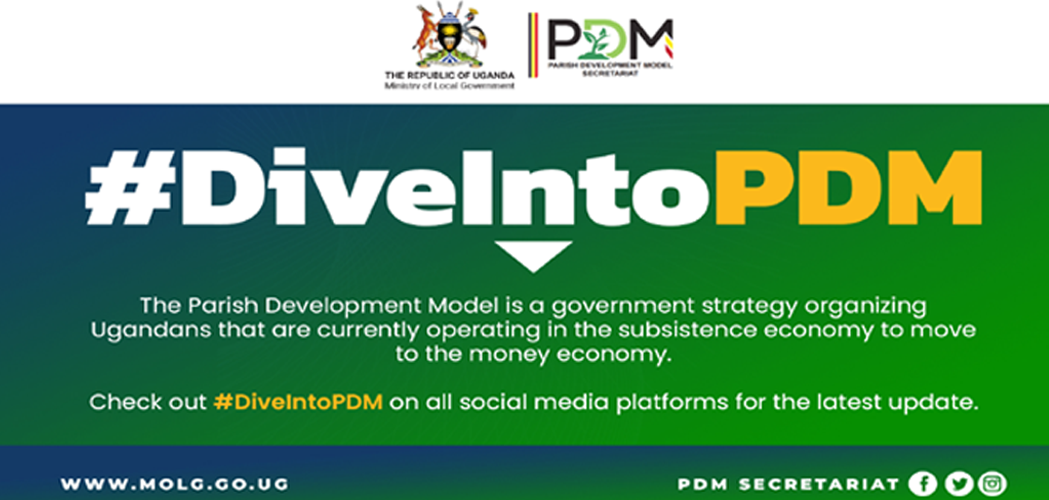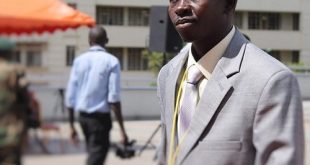
HOIMA REGIONAL BLOOD BANK TO SOLVE INFRASTRUCTURE CHALLENGES FOR COLLECTION AND PROCESSING OF BLOOD
By Goodluck Musinguzi
Dr Diana Atwine, Permanent Secretary of the Ministry of Health has reprioritised blood transfusion services in Uganda by providing more funding to Uganda Blood Transfusion Services to construct more infrastructure that will improve proper storage, and improved power outages for blood collected at the regional centres.
“the ongoing construction of Hoima Regional Blood Bank t will collect, process, store and distribute blood to health facilities in the region. This will decentralize services and reduce pressure on the National blood bank”, said Dr Diana Atwine.

Dr. Sophie Namasopo, Director Hoima Regional Referral Hospital says Hioma Regional Blood Bank is a timely gift that will improve blood transfusion services in the region.
Limited blood banks, regional collection centres and transportation means make it difficult for some transfusing entities to undertake timely blood transfusions. Dr Namasopo says Leaders in Bunyoro sub region region are excited over the government’s decision to construct a regional blood bank at Hoima Regional Referral Hospital for efficient service delivery.

The UBTS was established as an autonomous institute in 1989 and commissioned in January 2003. It operates within the framework of the National Health Policy (NHPI) and the Health Sector Development Plan (HSDP).
The headquarters at Nakasero Blood Bank act as a reference centre for the regional blood banks and other public and private hospitals. Blood is collected from healthy volunteer donors with least risk for Transfusion Transmissible Infections (TTIs).

The UBTS has grown from supplying blood in Central Uganda within a radius of 100km to a network of seven regional blood banks namely; Arua, FortPortal, Mbarara, Mbale, Gulu, Kitovu and Nakasero, and six collection centres; Hoima, Jinja, Kabale, Rukungiri, Lira and Soroti.
The core aim of UBTS is to collect and provide safe blood and blood components in the prevention and treatment of Malaria, Anemia; morbidity and mortality reduction; prevention of HIV/AIDS and other TTIs, promotion of Maternal and Child Health; and provision of blood for victims of accidents and emergencies.
The UBTS has a target of offering Blood Transfusion Services at all HCIVs, however, blood collection has not always met the targets

Lack of proper storage and power outages for blood collected at the regional centers; some centers lack enough fridges to store blood. For example Mbarara RRH reported a poor blood storage system and lack of reagents making it difficult to provide transfusion services to patients. The West Nile region also had power shortages because most rivers had dried up due to the weather changes. III. Limited blood banks, regional collection centres and transportation means making it difficult for some transfusing entities to undertake timely blood transfusions. Mubende and Hoima RRHs lack regional blood banks; their collection center is Nakasero Blood Bank which is very costly in terms of transportation. FortPortal UBTS also faces transportation inadequacy and operates mainly in FortPortal town, whereas they could provide outreach services to Kibaale, Kagadi, Bwere and other areas. Conclusion There has been an increase in blood collection by the UBTS from 187,000 units in 2010 to 266,800 units in 2016 but this is still inadequate. The blood shortages are largely due to funding gaps, inadequate human resources and infrastructure. These constraints are not insurmountable. Recommendations 1. The Ministry of Health (MoH) should work with UBTS to establish blood banks and collection centers at every RRH and General Hospital. 2. The MoH should reprioritize blood transfusion services and provide more funding to UBTS.
3- The UBTS should plan for hi-tech equipment and standby generators at every blood bank to avoid power shortages which destroy already processed blood. 4. The UBTS and Health Service Commission should fill the vacant positions.
The mission of Uganda Blood Transfusion Services (UBTS) is to provide sufficient and efficacious blood, and blood components through voluntary donations for appropriate use in health care service delivery.
The UBTS` main objective is focusing on increasing annual blood collection necessary to meet the transfusion needs for all patients in the country who need it. This is to be achieved through increased advocacy and mobilization for blood donation, strengthened strategic collaboration with the Uganda Red Cross Society and improved care and retention of safe blood (Ministry of Health, FY2016/17).
Despite the increase in collection, the UBTS still falls short of official hospital blood unit demands. According to the World Health Organisation (WHO), a country is supposed to collect units of blood equivalent to 1% of the total population.
Thus, 350,000 units of blood per Financial Year (FY) should be collected in Uganda. This Briefing Paper examines the extent and the key challenges faced by UBTS. The information used is based on field findings of the Budget Monitoring and Accountability Unit (BMAU) and other relevant literature.
Key Issues
Blood shortages in most health facilities due to inadequate donations.
Limited budget for blood processing.
Staffing gap at the regional blood banks and at UBTS headquarters.
Hoima Regional Referral Hospital has received Shillings 5.6 billion from the government this financial year in 2022 for capital development. The hospital director, Dr. Sophie Namasopo, says that Shillings 4.5 billion will finance the construction of the regional blood bank, and Shillings 1.15 billion will finance the construction of a maternal and perinatal complex.
Jackline Ayebazibwe, one of the patients who were at the hospital asked the management to expedite the process of establishing a regional blood bank to save the lives of people in need of blood transfusion. Kadir Kirungi, the Hoima LC5 chairperson, says the government needs to establish an independent district hospital for Hoima to decongest Hoima referral hospital.
He says that currently, patients from Hoima district, the city, and other neighboring districts depend on Hoima regional hospital for specialized medical services hence exerting pressure on the few available resources.
Brian Kaboyo, the Hoima city mayor says there is a need to allocate the hospital enough funding if it is to offer appropriate health services to the overwhelming number of patients.
British American Tobacco established Hoima Regional referral hospital in 1910 as a dispensary. In 1935. It was later elevated to a district hospital and in 2004, it was upgraded to a regional referral hospital. The facility serves a population of 3.5 million people from the nine districts of Hoima, Buliisa, Kiryandongo, Kakumiro, Kagadi, Kibaale, Masindi, Kikuube, and Hoima city.
 KIGEZI NEWS
KIGEZI NEWS


